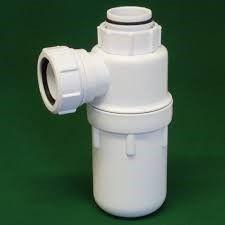
Know the types of trap and associated requirements
Quiz by Ricky Fleet
Feel free to use or edit a copy
includes Teacher and Student dashboards
Measure skillsfrom any curriculum
Measure skills
from any curriculum
Tag the questions with any skills you have. Your dashboard will track each student's mastery of each skill.
With a free account, teachers can
- edit the questions
- save a copy for later
- start a class game
- automatically assign follow-up activities based on students’ scores
- assign as homework
- share a link with colleagues
- print as a bubble sheet
39 questions
Show answers
- Q1What is the name of the trap in the image shown?P trapRunning trapBottle trapS trap30s
- Q2What is the name of the trap in the image shown?P trapU trapRunning trapBottle trap30s
- Q3What is the name of the trap in the image shown?P trapBottle trapP trapSelf-sealing valve30s
- Q4What is the name of the trap in the image shown?Running trapP trapSelf-sealing valveAnti-vacuum trap30s
- Q5What is the name of the trap in the image shown?Anti-vacuum trapRunning trapSelf-sealing valveP trap30s
- Q6What is the name of the trap in the image shown?Basin trapShallow shower trapP trapAnti vacuum trap30s
- Q7What is the name of the trap in the image shown?Running trapStraight through trapS trapP trap30s
- Q8What is the purpose of a trap fitted to a sanitary appliance?It minimises the risk of blockage or leakageIt provides a point where cleaning can occurIt allows waste branches to be connectedIt prevents foul air from entering the building30s
- Q9What is the minimum recommended depth of trap seal for a shower tray with pipework connecting to a discharge stack?25mm75mm38mm50mm30s
- Q10Refer to the diagram shown. Loss of the seal at trap B is most likely to be as a result of which one of the following?Self siphonageInduced siphonageCompressionBack pressure30s
- Q11Refer to the diagram shown. Loss of the seal at the trap is most likely to be as a result of which one of the following?Induced siphonageSelf siphonageBack pressureCompression30s
- Q12Which one of the following would prevent back pressure in a primary ventilated stack system?Ensure that branch pipes are positioned opposite each otherMake sure that a large radius bend is used at the base of the stackInstall a wind cowl to the top of the stack ventilation pipeworkInstall the WC at least six metres from the stack discharge pipework30s
- Q13Which one of the following indicates the most likely cause of a basin losing its trap seal when emptied?Self siphonageWavering outCompressionInduced siphonage30s
- Q14Appliances connected onto the lowest branch connection into a soil stack that is too close to the invert of the drain, will most likely lose their traps seals due toMomentumInduced siphonageCompressionSelf siphonage30s
- Q15What type of trap seal loss is shown in the image?MomentumBack pressureCompressionSelf siphonage30s
